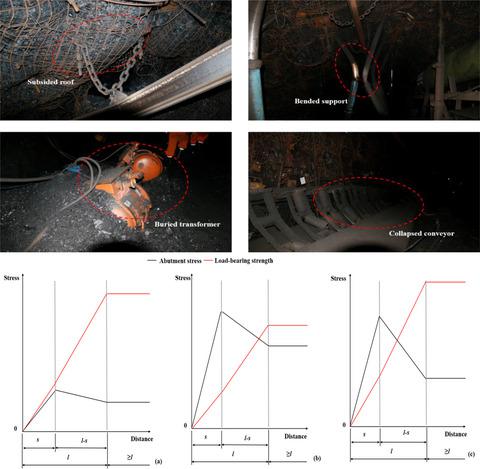当前位置:
X-MOL 学术
›
Energy Sci. Eng.
›
论文详情
Our official English website, www.x-mol.net, welcomes your
feedback! (Note: you will need to create a separate account there.)
Rock burst criteria and control based on an abutment‐stress‐transfer model in deep coal roadways
Energy Science & Engineering ( IF 3.5 ) Pub Date : 2020-05-06 , DOI: 10.1002/ese3.715 Ming Zhang 1 , Fuxing Jiang 2
Energy Science & Engineering ( IF 3.5 ) Pub Date : 2020-05-06 , DOI: 10.1002/ese3.715 Ming Zhang 1 , Fuxing Jiang 2
Affiliation

|
With the increase in cover depth of the coal seam, more and more rock bursts have occurred in deep coal roadways. The conventionally used passive preventive measures are not sufficient to reduce rock burst hazards in deep coal mines. To address this problem, this study firstly evaluated the abutment stress applied to the roadway surrounding rock by constructing an abutment‐stress‐transfer model after roadway excavation. Then, according to different positions of roadways in the coal seam, roadways are classified into three types: shallow‐buried roadway with hard surrounding coal/rock; deep‐buried roadway with soft surrounding coal/rock; and medium‐deep–buried roadway with medium‐hard surrounding coal/rock. Stress criterion and energy criterion for rock burst occurrence were proposed according to the three types of roadways. The rock bursts that occurred in stope 32 of Gucheng coal mine in China agree well with the calculation results. Finally, an active rock burst preventive approach (long borehole destress drilling) is suggested before intense supporting measures are adopted during roadway construction to prefracture the coal seam or competent strata. The efficiency of this method at different excavation stages is evaluated by examining borehole drill cuttings. The whole roadway was excavated without any rock burst after the borehole destress drilling method was implemented.
更新日期:2020-05-06











































 京公网安备 11010802027423号
京公网安备 11010802027423号